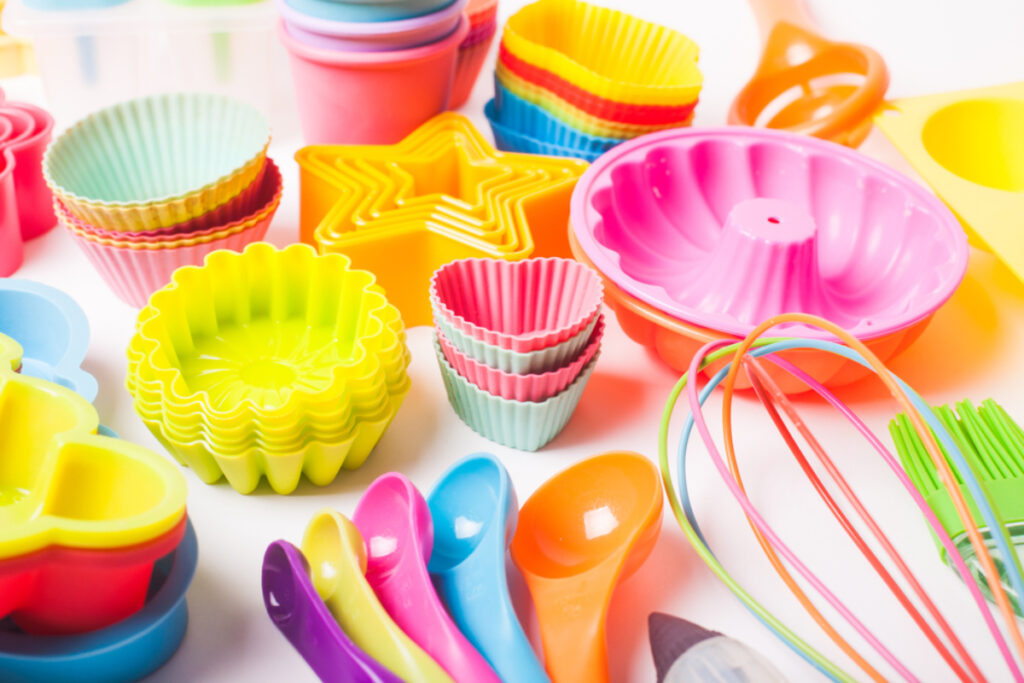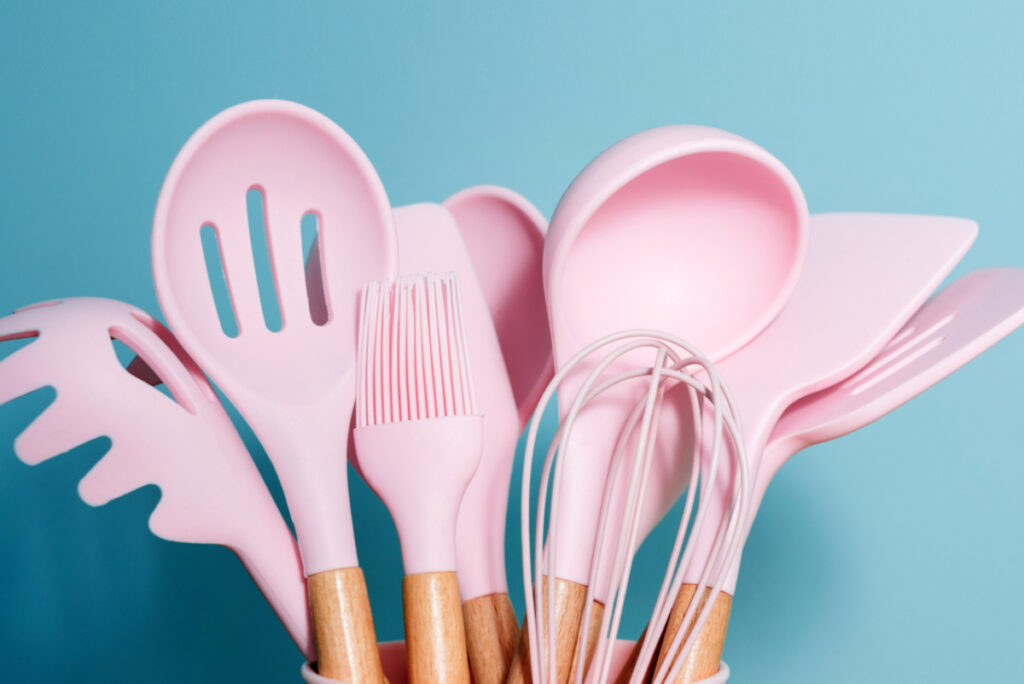When it comes to washing up after tea, the easiest thing to do is to pre-rinse everything in your sink and then load it all in the dishwasher. Putting your kitchen utensils through a dishwasher cycle not only saves you time but also provides a better wash than you ever could with a sponge and some dish soap.
Due to the easy nature of dishwashers, we are all sometimes guilty of putting items inside them that we shouldn’t. These items then end up getting ruined, or worse they end up causing damage to your dishwasher.
Today, we’ll be focussing on silicone and look at whether kitchen utensils made out of this material are dishwasher safe.

Can you put silicone in a dishwasher? The simple answer
Silicone is perfectly safe for dishwasher use, so if you have any kitchen utensils made out of this rubbery material then they are free to be washed in the dishwasher. Silicone is tough so it isn’t going to become damaged or distorted in the heat of a dishwasher and it should come out looking brand new after each cycle.
There are a couple of things to watch out for when you do clean your silicone items in a dishwasher, though. The first thing to consider is that sharp items such as kitchen knives are able to pierce through silicone. Therefore, avoid placing your silicone items close to anything sharp when you’re loading your dishwasher.
The second thing to watch out for is only relevant when it comes to unloading the dishwasher. Many silicone kitchen items have gaps in them to contain food items – these gaps are known to fill up with water during a dishwasher cycle. When it comes to unloading your silicone items, make sure to tip this residue water out before using them again.
Why is silicone used in the kitchen?
Silicone has become a popular material for kitchen utensils for a number of reasons. First of all, it doesn’t lose its shape when exposed to high temperatures meaning you can place it in ovens and microwaves without any damage.
Secondly, it is a non-toxic material which gives it an advantage over plastics. Silicone doesn’t react with food or beverages meaning no hazardous fumes are going to come off it. So, for households with children, it is a perfectly safe material to have in the kitchen.
Thirdly, it comes in a plethora of colours, meaning it’s a great option if you’re looking for utensils to match your kitchen’s colour scheme. The age of settling for what you don’t want has well and truly gone.
What kitchen items are made out of silicone?
Silicone is mainly found in baking products, specifically cake holders and baking pans. This is because it can withstand boiling hot temperatures for when cakes need baking, and also cold temperatures for when cakes need to be set in a fridge. With that in mind, it can also be used as an ice cube tray in your freezer.
Silicone can also be moulded into various different shapes, meaning it’s perfect for creative bakers who are looking to make cakes in unusual shapes and sizes.
Silicone has also proven to be a popular material when it comes to spatulas, tongs, ladles and serving spoons. These types of items are traditionally made out of plastic, wood or rubber but silicone trumps them all.
This is, again, due to its ability to work at high temperatures, but also because it doesn’t have an impact on non-stick pans. Other materials are capable of scratching away this non-stick element but silicone simply isn’t sharp enough to do that. Additionally, sauces aren’t going to stain on silicone, whereas they can do on plastics, rubbers and wood.

How to hand wash silicone
If you are finding that your dishwasher isn’t doing a good job of cleaning your silicone items then there is no harm in washing them yourself. Many people find that it’s easier to remove grease by hand so if that’s the issue at hand then you may want to just go for the hand wash approach from the off.
Please follow these steps to successfully clean your silicone items by hand:
- Fill up a bucket in your sink with boiling hot water and washing up liquid.
- Place your greasy silicone items into the bucket and leave them to soak for a couple of hours.
- Once the water in the sink has reduced in temperature, pick up a washing up sponge and apply some dish soap to it.
- Scrub the silicone items thoroughly until they look and smell like the grease has been removed.
- Leave the items to dry and check back after a few hours to see if this method has done the trick. If it has, then place the items back in the cupboards where they live. If they are still looking greasy then continue to step 6.
- Sprinkle some baking soda on to your silicone products and leave it to sit on them for 8-10 hours. The best time to do this is at night so you aren’t sitting around waiting.
- The baking soda will absorb all of the grease, meaning that after the allotted time is up you just have to dispose of the baking soda and then give the silicone one final rinse.
- Leave the silicone products to dry on a drying rack.
Conclusion
To conclude, silicone is 100% dishwasher safe. There are many advantageous qualities of silicone which make it a fantastic material for kitchen utensils, including its ability to work in high temperatures and its resistance to stains. If you would rather hand wash your silicone items then use our guide above for the best results possible.
